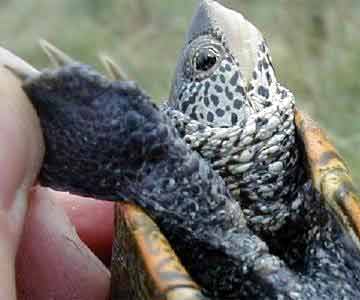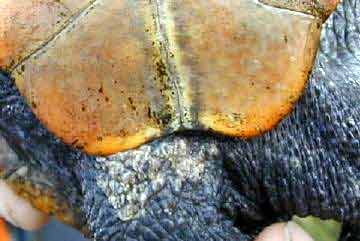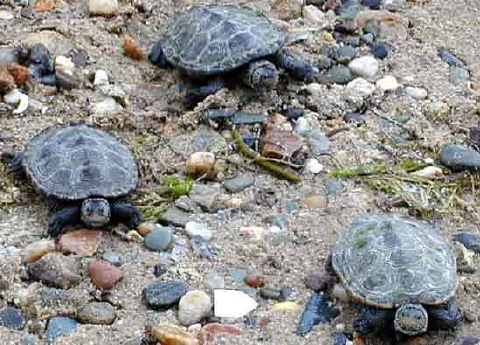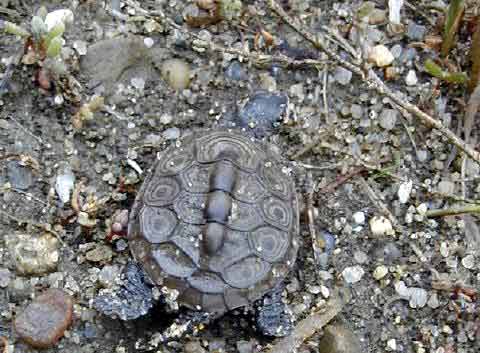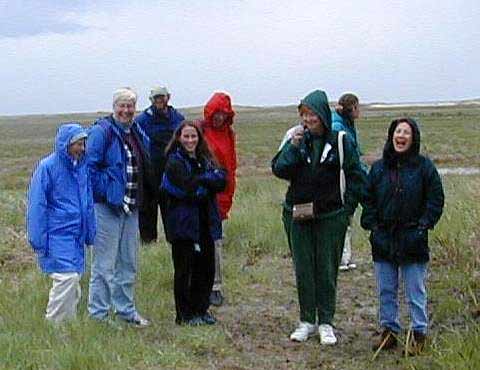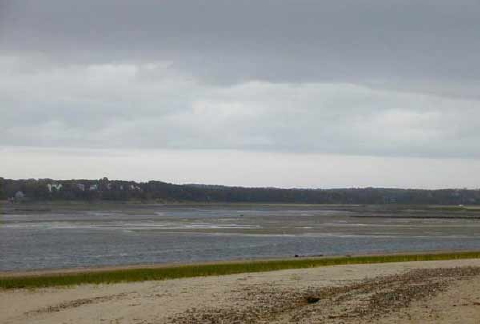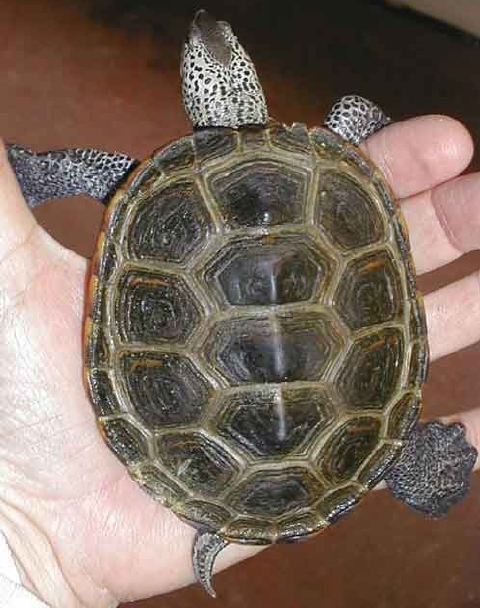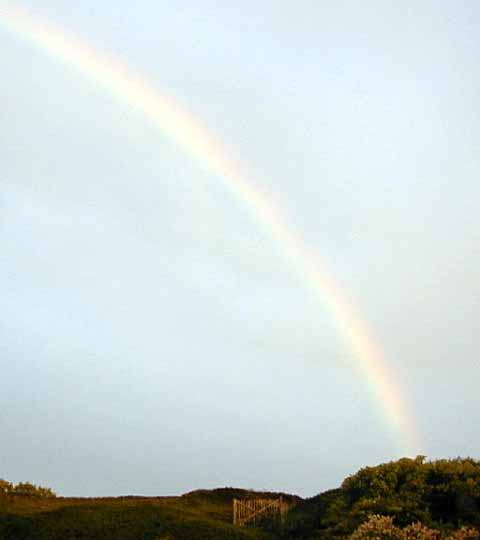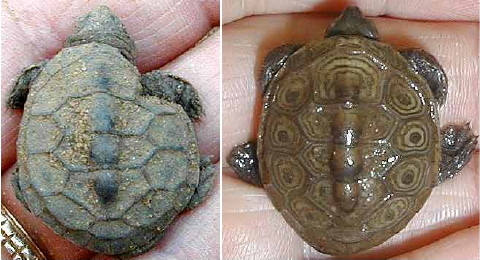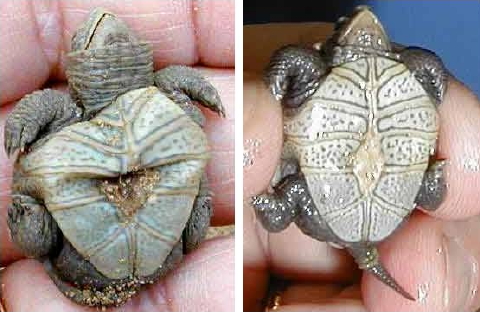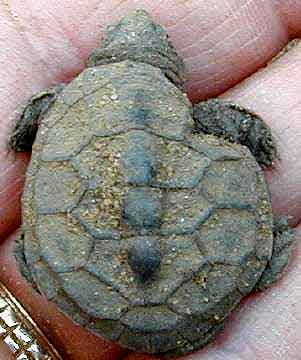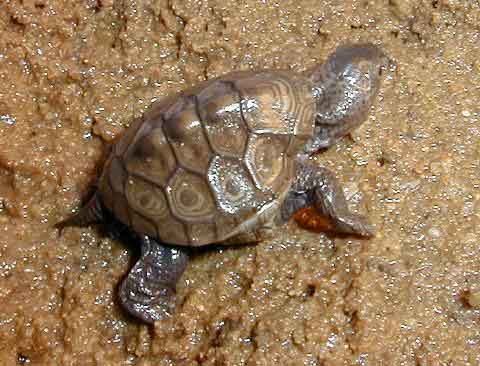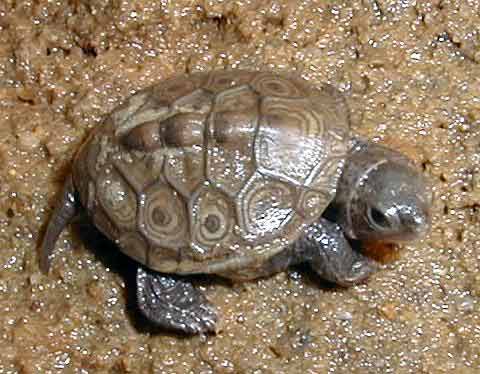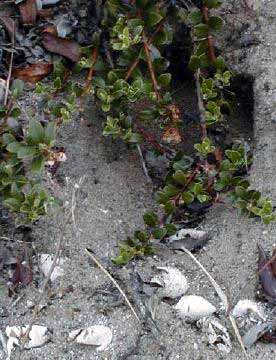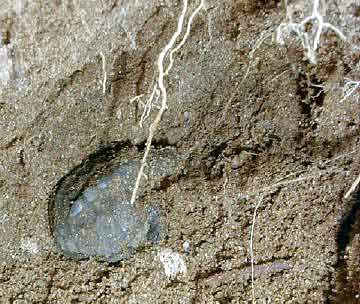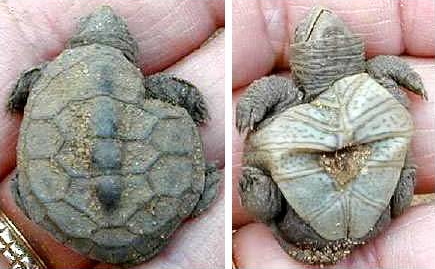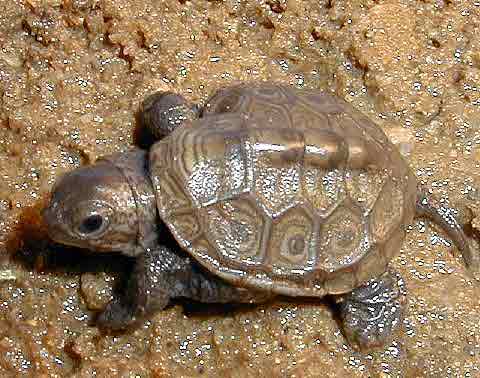Male Terrapin #1058
 The Cape continues to be battered by waves of storm clouds off the Atlantic. Temperatures hover in the mid-50s, skies run the full spectrum from dark gray to black, and the bay is churned mucky by a persistent easterly blow. Nevertheless, new moon tides present opportunities to observe terrapins in the creeks and today’s low came early. We waded into Blackfish Creek and patrolled the rip line for about an hour before ebb tide. We saw not a single female terrapin pass through the rapids, but we were able to net three males: one 6-year-old and two 7-year-olds. Both 7-year-olds were recaptures. Terrapin 702 had first been seen on 3 June 2000, and then again on 30 July 2000.
Male Terrapin #1058 with Rash on TailÂ
Turtle 1058, last seen on 4 May, now shows a rash on his right front and right rear limbs.Â
Three Male Terrapins Scramble Back into Blackfish Creek
Despite foul weather, these three fellows showed no hesitation to leave the sheltered processing case and scramble back into the chilly waters of Blackfish Creek.Â
Terrapin Hatchling Knotch Returns to the WildÂ
Today also marked freedom for the two rescued hatchlings who were recuperating in my lab. Both had recovered sufficiently to return to the wild. Knotch had survived root predation and dehydration which had killed her 15 nest mates, a deformity caused by root strangling, and coyote predation of her nest. A week of treatment with heat and humidity, and she seemed as good as new, raring to break for freedom. I returned her to the Lieutenant Island nursery habitat and watched her weave her way into the dense marsh vegetation. I defy anyone to find a trace of her former carapace deformity.Â
Terrapin Hatchling Terry Released by Wellfleet Bay Naturalists
Terry, the desiccated hatchling found blindly crawling along the Goose Pond Trail by a group of Maryland high schoolers, also had recovered enough to earn her release. Today was turtle day for the naturalists’ training class at the Wellfleet Bay Wildlife Sanctuary. After a lecture on box turtles and terrapins, several of the students braved rain, wind, and chill to see Terry off in the salt marsh near Try Island. Despite weather conditions, releases are the brightest moments for budding naturalists.
